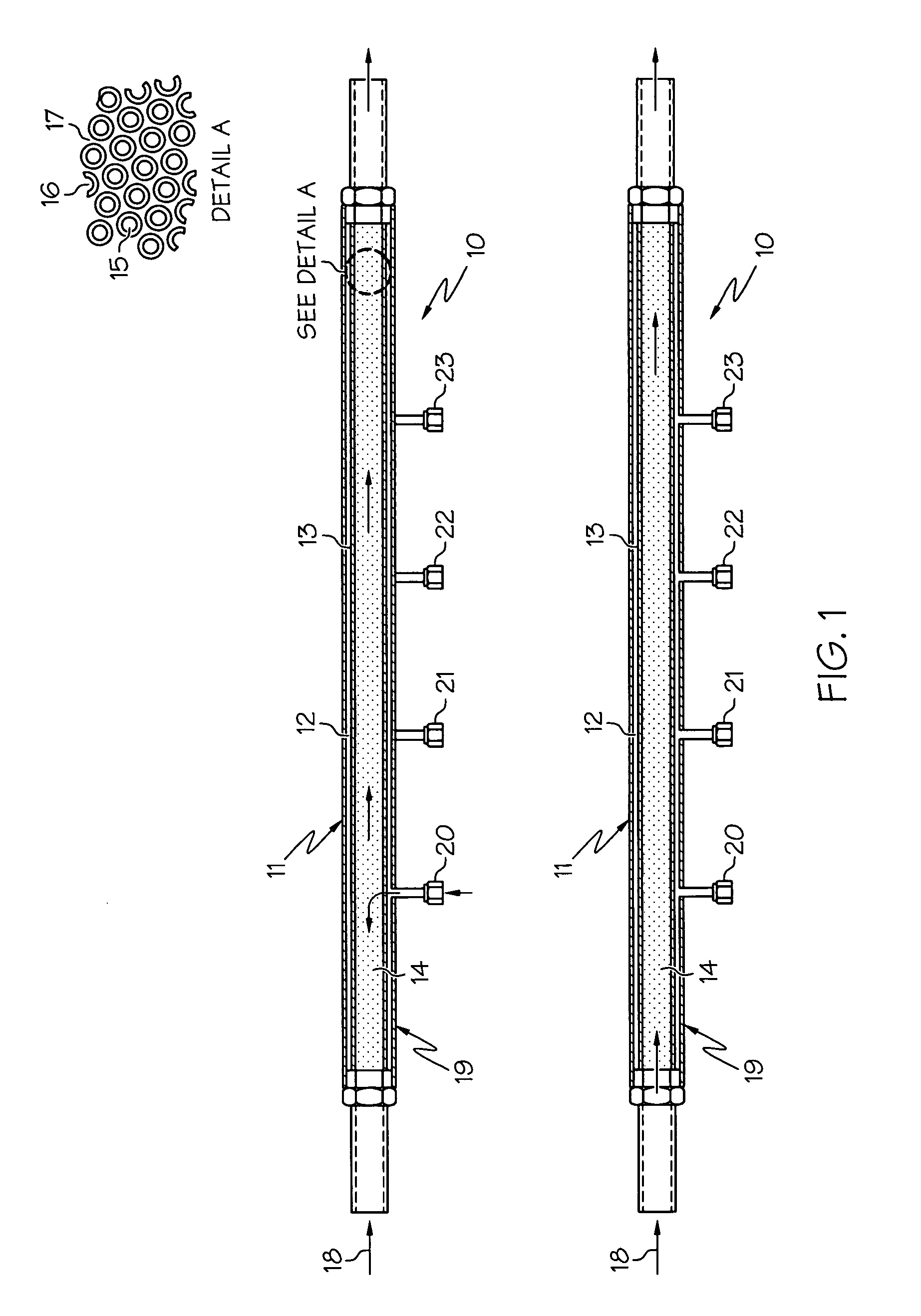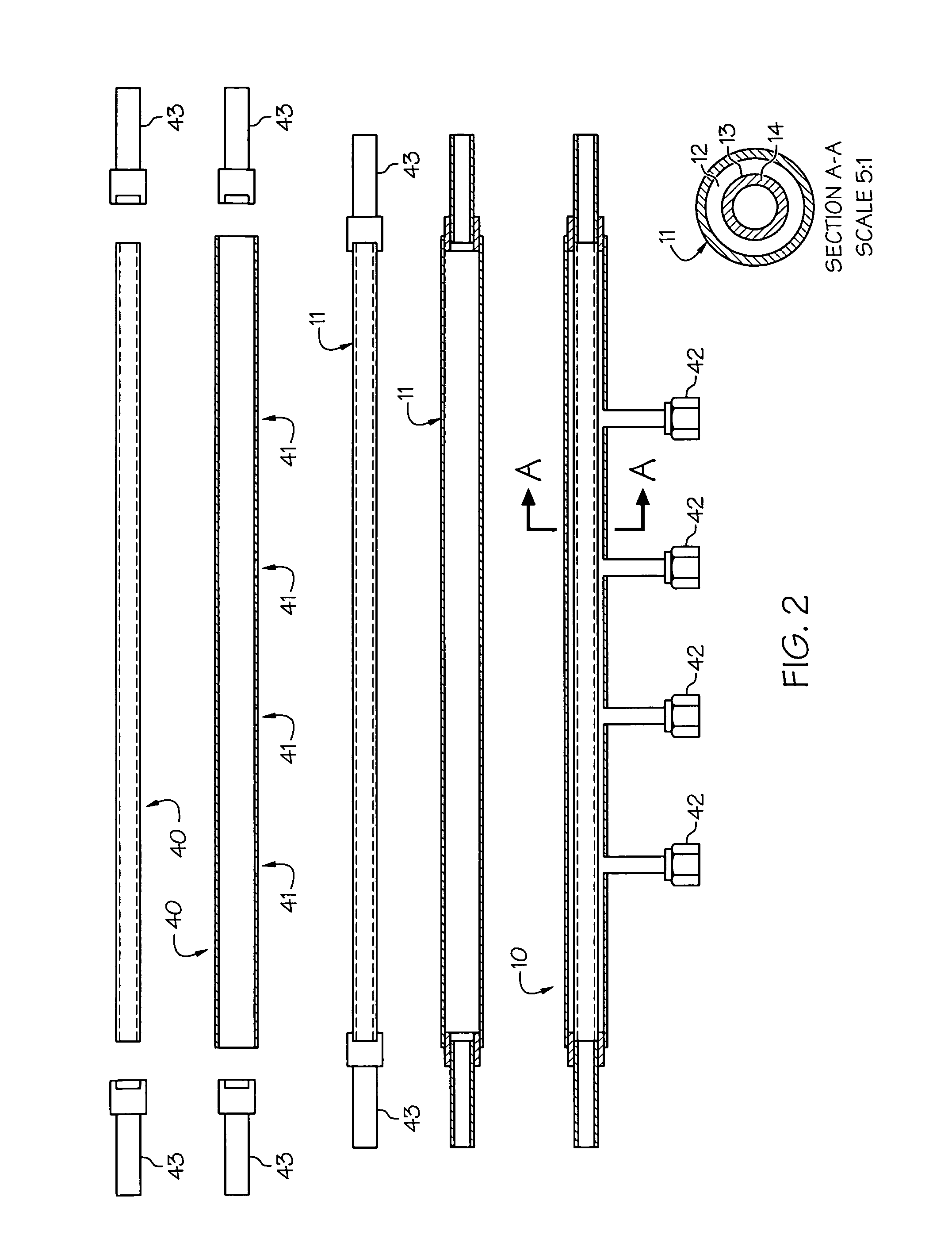Filter for determination of mercury in exhaust gases
a filter and exhaust gas technology, applied in the field of filters, can solve the problems of affecting the operation efficiency of flue gas generators, and affecting so as to prevent the catalytic oxidation of elemental mercury and improve the accuracy of total gaseous mercury measuremen
- Summary
- Abstract
- Description
- Claims
- Application Information
AI Technical Summary
Benefits of technology
Problems solved by technology
Method used
Image
Examples
examples
[0168]Numerous tests have verified the unexpectedly advantageous properties of the preferred apparatus, most notably those conducted by Sjostrom et al. relating to an initial version of a preferred apparatus. In some of these tests, coated parts have been substituted for uncoated parts in mercury sampling systems as a basis for comparison. In all cases, the total gaseous mercury recovered improved and the integrity of the ratio of elemental to oxidized mercury was better preserved when exposed to the coated parts.
[0169]Two systems were used to introduce elemental and oxidized mercury into the probe extension upstream of the gas sample acquisition and filtration apparatus during testing. The elemental spiking system was a PSA 10.534 Mercury Calibration System fabricated by PS Analytical. The PSA 10.534 provides a wide range of mercury concentrations by altering the temperature of a mercury reservoir and varying the gas flowrate through the reservoir. The mercury reservoir is construc...
PUM
| Property | Measurement | Unit |
|---|---|---|
| thickness | aaaaa | aaaaa |
| pore size | aaaaa | aaaaa |
| pore size | aaaaa | aaaaa |
Abstract
Description
Claims
Application Information
 Login to View More
Login to View More - R&D
- Intellectual Property
- Life Sciences
- Materials
- Tech Scout
- Unparalleled Data Quality
- Higher Quality Content
- 60% Fewer Hallucinations
Browse by: Latest US Patents, China's latest patents, Technical Efficacy Thesaurus, Application Domain, Technology Topic, Popular Technical Reports.
© 2025 PatSnap. All rights reserved.Legal|Privacy policy|Modern Slavery Act Transparency Statement|Sitemap|About US| Contact US: help@patsnap.com



